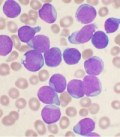 As it is a holiday across the UK today, there is probably little need to warn Brits of the dangers of the sun’s rays, it’s usually so cold and wet, that the chances of frostbite and rust are much higher than sunburn. That said, summer is on its way and a paper in the latest edition of the Lancet medical journal warns that sunscreen and light cotton clothing are simply not enough to protect you from skin cancer caused by exposure to ultraviolet light from the sun.
As it is a holiday across the UK today, there is probably little need to warn Brits of the dangers of the sun’s rays, it’s usually so cold and wet, that the chances of frostbite and rust are much higher than sunburn. That said, summer is on its way and a paper in the latest edition of the Lancet medical journal warns that sunscreen and light cotton clothing are simply not enough to protect you from skin cancer caused by exposure to ultraviolet light from the sun.
Instead, the paper’s author suggest that anyone who dares to partake of the great outdoors should wear heavy cotton clothing such as denim, wool, or polyester, to block out those damaging rays. But, should this advice be well taken? Is the sun really to blame for the apparent increased incidence of skin cancer we hear reported or could it be that our car and desk bound sedentary lifestyles in which most people barely see the sun except on their foreign holidays are more to blame for compromising our immune systems and making us more susceptible to skin and various other forms of cancer.
We’ve covered this issue previously in Sciencebase, recent evidence points to a lack of vitamin D (manufactured in the skin during sunlight exposure) as being a much higher risk factor for various cancers than sun exposure itself.
The Lancet Review authored by dermatologist Stephan Lautenschlager of Triemli Hospital, in Zurich, Switzerland, analysed the various sun protection strategies used around the globe. “Wearing sun protective clothes and a hat and reducing sun exposure to a minimum should be preferred to sunscreens,” the team writes, “Often this solution is deemed to be unacceptable in our global, outdoor society, and sunscreens could become the predominant mode of sun protection for various societal reasons, for example healthiness of a tan, relaxation in the sun.”
The Review says that linen and loosely woven cotton represent less effective sun protection and that tightly woven, thick garments made of denim, wool or polyester offer the best protection; not exactly the kind of clothing anyone but heavy metal fans would want to wear on a scorching hot sunny day.
The paper points out that several studies have shown that sunscreen protects against acute UV skin damage and non-melanoma skin cancer, it is not known whether sunscreen stops melanoma developing. And, perhaps therein lies the rub, the connection between sunlight exposure and skin cancer itself is not as cut and dried as some commentators suggest.
“Suggesting wearing denim in hot weather is I think so stupid – it is very uncomfortable. Special clothing is not needed in the UK – on rare very hot days it is better simply to seek the shade – after some exposure to get your dose of D without burning, says Oliver Gillie of London-based lobby group Health Research Forum. He points out once more, that insufficient exposure to sunlight could be doing us more harm than good in terms of increasing cancer risk because of a lack of vitamin D.
“A link between heart disease and insufficient vitamin D is emerging,” he told Sciencebase, “and the National Heart Forum is interested in this aspect of the debate.” Given that until now the sunlight and skin cancer debate has essentially been a Cancer Research UK monopoly, it will be interesting to see how the heart charity approaches the issues.
There have been numerous other research developments that have not seen the media light of day. “There are links with infectious disease,” adds Gillie, “Vitamin D is important for maintaining immune system resistance a fact well-known to those treating tuberculosis a century ago and well before the advent of antibiotics.”
Cancer Research UK says that 90% of melanoma is caused by sun exposure. “This is a very contentious figure,” Gillie points out, “and is disputed.” He adds that it could be that as few as one in ten melanoma cases are caused by sun exposure. “Poor immunity is a big factor in melanoma and people who are on immune suppressing drugs e.g. transplant patients are at high risk,” he says.
Such observations certainly cloud the picture of sun exposure as the big skin cancer killer. He also points out that purported mechanisms for DNA damage and thence skin cancer formation based on the photochemistry of DNA itself no longer stack up because it is now known that melanin, the pigment that gives rise to a tan is a protective agent against the very mutagenic molecules thought to form on sun exposure. Indeed, Raymond Barnhill and colleagues writing in the Journal of the National Cancer Institute (2005, 97, 195-199) found that people with melanoma survive longer if they have more sun exposure. This is doubly ironic in that post-treatment melanoma patients are usually advised to stay out of the sun.
If the British weather is kind for once this Bank Holiday Monday, it will pour sunshine down on all of us. So, leave the denim at home, unless you are a heavy metal fan, and make sure your icecream doesn’t melt while you are sunning yourself.
A biomarker for prostate cancer has been identified in urine. Details of the molecule sarcosine is published later this week in the journal Nature.
 The first 2009 issue of SpectroscopyNOW is now available:
The first 2009 issue of SpectroscopyNOW is now available: I don’t know anyone who hasn’t got a cancer story to tell, whether it is personal experience, a relative or friend, or association with their patients or through their research.
I don’t know anyone who hasn’t got a cancer story to tell, whether it is personal experience, a relative or friend, or association with their patients or through their research.
 In chemistry news this week, The Alchemist learns about slow-release drug formulations that prevent drug abuse, the risks of war associated with using depleted uranium in munitions and armour plating, and the analytical benefits of red wine that could turn up on labels to guide consumers to the most healthful Chianti or Zindanfel.
In chemistry news this week, The Alchemist learns about slow-release drug formulations that prevent drug abuse, the risks of war associated with using depleted uranium in munitions and armour plating, and the analytical benefits of red wine that could turn up on labels to guide consumers to the most healthful Chianti or Zindanfel. As it is a holiday across the UK today, there is probably little need to warn Brits of the dangers of the sun’s rays, it’s usually so cold and wet, that the chances of frostbite and rust are much higher than sunburn. That said, summer is on its way and a paper in the latest edition of the Lancet medical journal warns that sunscreen and light cotton clothing are simply not enough to protect you from skin cancer caused by exposure to ultraviolet light from the sun.
As it is a holiday across the UK today, there is probably little need to warn Brits of the dangers of the sun’s rays, it’s usually so cold and wet, that the chances of frostbite and rust are much higher than sunburn. That said, summer is on its way and a paper in the latest edition of the Lancet medical journal warns that sunscreen and light cotton clothing are simply not enough to protect you from skin cancer caused by exposure to ultraviolet light from the sun. A female friend of a friend started on hormone replacement therapy (to treat quite severe early postmenopausal symptoms, and on the advice of her GP to reduce the risk of osteoporosis). The symptoms have all but been relieved (although it’s difficult to separate out the effects of the HRT hormones themselves from the phytoestrogens she imbibes from soy milk and other related foods).
A female friend of a friend started on hormone replacement therapy (to treat quite severe early postmenopausal symptoms, and on the advice of her GP to reduce the risk of osteoporosis). The symptoms have all but been relieved (although it’s difficult to separate out the effects of the HRT hormones themselves from the phytoestrogens she imbibes from soy milk and other related foods). A plea from a Sciencebase reader asking for more information on new treatments for COPD, chronic obstructive pulmonary disease, led me to do a search to find the specific novel therapy the reader mentioned. Apparently, there was a news item on US TV that referred to research in Mexico.
A plea from a Sciencebase reader asking for more information on new treatments for COPD, chronic obstructive pulmonary disease, led me to do a search to find the specific novel therapy the reader mentioned. Apparently, there was a news item on US TV that referred to research in Mexico. The UK Times paper reported on Saturday that a leading cancer researcher Professor Lawrie Challis chairman of the government-funded mobile telecommunications health research programme believes it is time that a large-scale study into the long-term risks associated with cellphone use.
The UK Times paper reported on Saturday that a leading cancer researcher Professor Lawrie Challis chairman of the government-funded mobile telecommunications health research programme believes it is time that a large-scale study into the long-term risks associated with cellphone use.